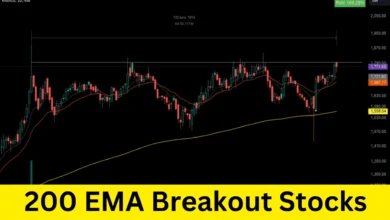Berkshire Hathaway Stock: Warren Buffett Increases Cash Reserves to Record $277 Billion
Warren Buffett, the legendary investor and chairman of Berkshire Hathaway, has once again made headlines with his strategic financial maneuvers. The recent developments in Berkshire Hathaway’s financial landscape are particularly noteworthy as the company’s cash reserves have soared to unprecedented levels. This article delves into the details of Berkshire Hathaway’s record-breaking cash reserves, the strategic stock sales that fueled this growth, and the implications for investors and the broader market.
Berkshire Hathaway’s Record Cash Reserves
As of the latest quarter, Berkshire Hathaway’s cash reserves have swelled to a record $276.9 billion. This significant increase from the previous record of $189 billion, set in the first quarter of 2024, highlights the company’s strategic shift towards liquidity. The cash pile’s growth is largely attributed to the substantial sales of stock holdings, particularly in tech giant Apple.
Strategic Stock Sales: A Closer Look
Berkshire Hathaway has been actively selling stocks for seven consecutive quarters. However, the pace of these sales accelerated significantly in the latest period, with Buffett shedding more than $75 billion in equities during the second quarter alone. This aggressive selling spree brings the total stock sales in the first half of 2024 to over $90 billion.
Apple, a cornerstone of Berkshire’s portfolio, saw nearly half of Buffett’s stake sold off in the second quarter. Additionally, Berkshire has been trimming its position in Bank of America, the conglomerate’s second-largest holding, for 12 consecutive days, as revealed in recent filings.
Operating Earnings and Key Performances
Despite the extensive stock sales, Berkshire Hathaway’s operating earnings demonstrated robust growth. The conglomerate’s operating earnings, encompassing profits from its fully-owned businesses, reached $11.6 billion in the second quarter, marking a 15% increase from $10 billion in the previous year. This growth is primarily driven by the strength of its auto insurer, Geico.
Geico, often referred to by Buffett as his “favorite child,” reported underwriting earnings before taxes of nearly $1.8 billion in the second quarter, more than tripling the $514 million reported a year ago. This substantial increase underscores Geico’s pivotal role in bolstering Berkshire’s overall earnings.
Performance of Other Segments
BNSF Railway, another key subsidiary of Berkshire Hathaway, posted a stable profit of $1.6 billion, mirroring last year’s performance. However, the conglomerate’s energy utility business, Berkshire Hathaway Energy (BHE), faced challenges, with earnings falling to $326 million from $624 million a year earlier. BHE continues to grapple with potential wildfire liabilities, impacting its financial results.
Buffett’s Investment Philosophy and Market Outlook
Warren Buffett, who is set to turn 94 at the end of the month, reiterated his cautious investment approach at Berkshire’s annual meeting in May. While expressing a willingness to deploy capital, Buffett emphasized the importance of finding investments that offer substantial returns with minimal risk. “We’d love to spend it, but we won’t spend it unless we think [a business is] doing something that has very little risk and can make us a lot of money,” Buffett stated.
Buffett’s cautious stance is reflected in Berkshire’s modest stock buyback activity. The conglomerate repurchased only $345 million worth of its own stock in the second quarter, a significant drop from the $2 billion repurchased in each of the preceding two quarters.
Market Conditions and Investor Sentiment
The broader market context has also played a role in Berkshire’s strategic decisions. The S&P 500 has experienced a significant surge over the past two years, driven by investor optimism that the Federal Reserve’s measures would curb inflation without triggering a recession. In 2024 alone, the S&P 500 has risen by 12%. However, recent weak economic data, including a disappointing July jobs report, has rekindled concerns about a potential economic slowdown. The Dow Jones Industrial Average, for instance, plummeted by 600 points following the release of the jobs report.
Investor sentiment has also been influenced by rising concerns over valuations in the technology sector, which has led the bull market due to optimism surrounding artificial intelligence innovation. These factors have created a complex and uncertain market environment, prompting cautious strategies from seasoned investors like Buffett.
Implications for Investors
For investors, Berkshire Hathaway’s record cash reserves and strategic stock sales present both opportunities and challenges. On one hand, the significant liquidity provides Berkshire with a strong buffer against market volatility and the potential to capitalize on future investment opportunities. On the other hand, the extensive selling of stocks, particularly high-performing ones like Apple, may raise questions about the conglomerate’s future growth prospects.
Buffett’s prudent investment philosophy and cautious market outlook underscore the importance of carefully assessing market conditions and valuations before making investment decisions. Investors should consider these factors when evaluating their own portfolios and strategies.
Conclusion
Warren Buffett’s strategic maneuvers at Berkshire Hathaway, marked by record cash reserves and substantial stock sales, reflect his prudent and cautious approach to investing in an uncertain market environment. The conglomerate’s strong operating earnings, driven by key subsidiaries like Geico and BNSF Railway, highlight the resilience and stability of its core businesses.
As the market continues to navigate economic uncertainties and evolving investor sentiments, Buffett’s actions serve as a valuable reminder of the importance of liquidity, risk management, and strategic decision-making. Investors should closely monitor these developments and consider their implications for their own investment strategies.


